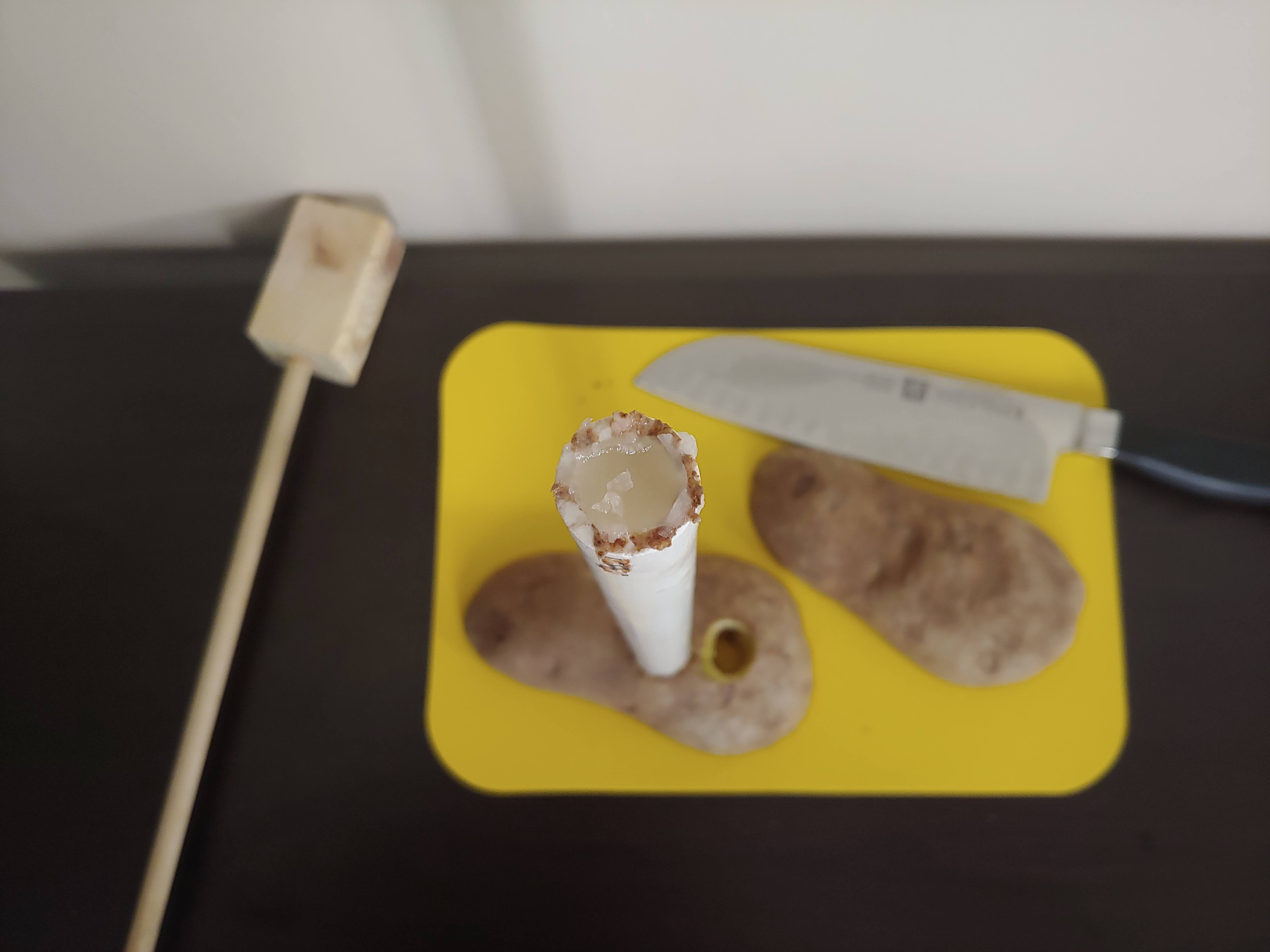Thanksgiving Science Activity: Potato Shooters!
Make turkey day extra memorable this year with this fun Thanksgiving science activity!
I had so much fun making these potato shooters with my 7th grade class that I took them to my family’s Thanksgiving dinner! We had a blast shooting potato chunks at each other and launching them out into the yard.
Seriously, it turned out to be one of my very favorite holidays ever!
Check it out in my video below & click the button to download the free student slides!
Lesson Description: Thanksgiving Potato Shooters
Summary: Students will build PVC potato shooters and measure the trajectory of their potato launches.
Time Required: Flexible. At least one class period.
Materials Needed:
- Potatoes
- 1/2 inch diameter PVC pipe, cut into 12 inch lengths
- 3/8 inch Wooden dowel, cut slightly longer than PVC pipe lengths
- Stopper – I cut a 2×4 into blocks. You could also use a cork or similar.
- Optional but STRONLY RECOMMENDED: Tool for beveling the edges of your PVC
- Measuring tape/yardsticks
- Stopwatch or timers
- Physics App for student devices
- Student Slides
Essential Problem:
- Design a PVC shooter that optimizes the launch distance of your potato.
Learning Goals:
- Students can use their knowledge of Newton’s laws to design and build a projectile launching device.
- Students will create a correctly labeled force diagram representing their experiment.

How to Build a Potato Shooter
- Cut your PVC pipe as desired. Minimum length about a foot, maximum about 3 feet.
- Cut wooden dowel to one or two inches longer than PVC pipe.
- Attach dowel to stopper. I drilled a hole for the dowel into the stopper block, and then glued the dowel into the hole.
- OPTIONAL BUT HIGHLY RECOMMENDED: Bevel the edges on both ends of the pipe. You can skip this step, but it makes it difficult to push the pipe into the potato. You will definitely want to bevel those edges if you are doing this activity with younger kids!
I prepped the stoppers and beveled a variety of pipes ahead of time so students would have more time for testing. I reuse my pipes and stoppers every year, so prep is minimal after the first time.

The Launch
Watch my video above to see it in action! For convenience, here is a written summary of the basic steps as well:
- Cut potato in half long ways.
- Push one end of PVC pipe into the potato. Be sure to get a good seal!
- Flip the PVC pipe around and push the other end of the pipe into the potato.
- Aim!
- Fire! Use the dowel with stopper to push the potato chunk up the pipe. The pressure between the two will cause the other chunk at the top of the pipe to “pop” out!
- Reload a new potato chunk into the bottom end and fire away!
Why I love This Thanksgiving Science Activity
The Variables!
This activity lends itself so well to experimenting with many variables. Here are just a few variables that students could investigate:
- PVC pipe length
- PVC pipe diameter
- Potato chunk size/thickness
- Seal on potatoes
- Loading multiple potato chunks
- Air pressure inside gun (distance between chunks on each end of pipe)
Creative Experimental Design!
You and your students can get creative with methods for measuring the experiment! You can easily measure and calculate the projectile distance, height, velocity, acceleration, or accuracy of shooting at a target.
Ideas for data collection: I’ve heard of several awesome Physics Apps for different devices that students can use to track the trajectory of their object.
- Vernier Physics gives students the ability to video their launch and create graphs representing position, trajectory, and velocity. I haven’t personally used this app, but I’ve heard that you need to make sure you have a steady camera and a contrasting background in order for it to work well.
- Alternatively, I had students measure the distance the potato chunk flew with a good old measuring tape, and a stopwatch to time it. From those two measurements they can easily calculate a rough velocity (m/s).
To help students with their experimental design, here is a guided lab report a la Google Slides! Preview below!
More Thanksgiving Science Ideas!
1. Potato cannons – Build a larger scale potato cannon! Instead of pressure, these cannons typically use a combustion reaction or pressurized air to shoot the potato. Igniting aersolized hairspray is a great cheap accelerant, or you can even use calcium carbide if you have some leftover from my Exploding Pumpkins activity!
2. Potato Slingshots – Check out this awesome high-power slingshot! This is a little safer option than the combustion or pressurized air cannons, but still packs a big punch!
3. Potato Pellet Guns – These fun and inexpensive little toys work by the same principle as my PVC shooters! They run about $3 each, which makes them a great cheap option that requires no prep!
More Related Activities: Tons of great additional resources on this topic are available from The Physics Classroom! They have virtual labs, simulations, demonstrations, practice problems, and much more!
How was it?
I would LOVE to hear your feedback for this lesson! How did it go? What other fun Thanksgiving science lessons have you tried in your classroom? Please share in the comments!



